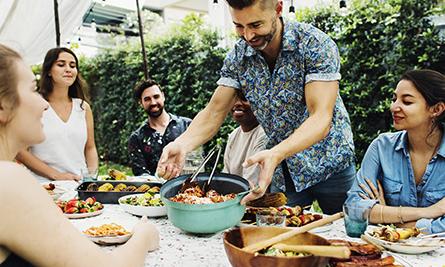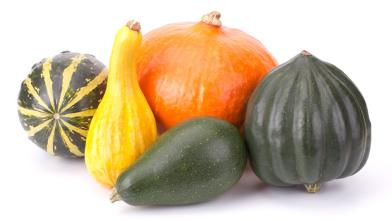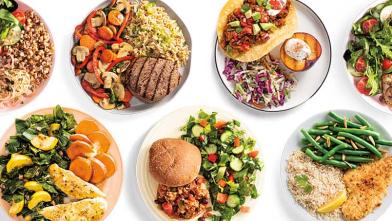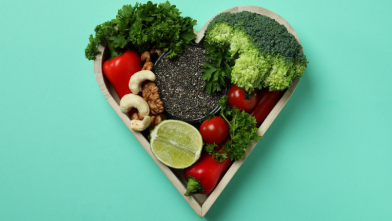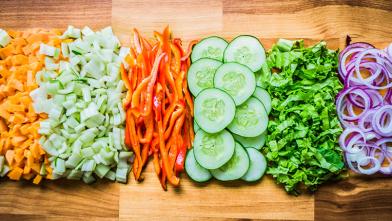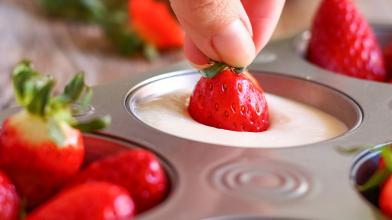Because foodborne bacteria thrive and multiply more quickly in warmer temperatures, cases of food poisoning can spike during summer. This is likely because bacteria multiply faster in warmer temperatures, and preparing food outdoors makes safe food handling more difficult.
Incidences of foodborne illnesses can happen year-round but increase during the summer. This is likely because bacteria multiply faster in warmer temperatures, and preparing food outdoors makes safe food handling more difficult.
The road to food safety can either be a bumpy one or smooth—depending on what precautions are taken handling meals as we travel during the summer. If you don’t take food safety into account when preparing and traveling with food, you may be taking a highway to the danger zone—literally!
What is the food temperature danger zone?
The danger zone is the temperature range between 40–140 degrees F and foodborne bacteria can multiply, reaching dangerous levels that can cause illness. Leaving potentially hazardous foods, such as meat, poultry, seafood and milk products out too long in the danger zone is one of the most common mistakes people make, especially during warmer months. To steer clear of the danger zone, you should always:
- Keep cold food at or below 40 degrees F in the refrigerator, in coolers, or in containers on ice.
- Limit the time coolers are open. Open and close the lid quickly. Do not leave coolers in direct sunlight.
- Keep hot food at or above 140 degrees F in chafing dishes, warming trays, slow cookers, or on the grill. You can keep cooked meats hot by setting them to the side of the grill rack, not directly over the coals where they could overcook.
- Never leave food out for more than two hours. If the temperature of where you are is above 90 degrees F, food should not be left out for more than one hour.
How to Travel with Food
Preparing and bringing your own food when traveling on road trips, camping, or heading out to a picnic means that you can choose foods that fit in your healthy eating plan. But traveling with food or cooking and eating outdoors requires careful packing and preparation to prevent foodborne illness. Here are some tips to safely prepare, pack, and enjoy food outdoors or on the road.
Prior to preparing meals:
- Wash your hands with warm water and soap for at least 20 seconds before handling food—this is an important way to reduce the spread of germs and prevent foodborne illness.
- Wash your hands again after handling raw meat, poultry, eggs, or seafood. If you do not have access to clean water, make sure to pack clean moist towelettes and/or hand sanitizer.
- Avoid handling cell phones, electronic devices, keys, and bags during food prep, and keep them off prep and eating surfaces.
- Always use clean utensils, plates, and cutting boards. Remember to use one set of plates, utensils, and cutting boards for raw meat and another set for fresh fruits and vegetables.
- Wash fruits and vegetables with clean water, but never wash meat, poultry, or seafood. Washing meats, poultry, and seafood can cause the spread of bacteria to surfaces near the washing area.
While preparing meals:
- Always use a food thermometer to check the internal temperature of burgers, steaks, chicken, and foods containing meat or poultry. To properly measure the temperature, stick the food thermometer in the thickest part of the meat.
- The safe minimum internal temperature needed to destroy harmful bacteria depends on the type of meat:
- Hamburgers, sausages, and other ground meats: 160 degrees F
- All poultry: 165 degrees F
- Fish: 145 degrees F
- Whole cuts of pork, lamb, veal, and beef: 145 degrees F and allowed to rest for three minutes before eating
- When taking food off the grill, use a clean platter. Don't put cooked food on the same platter that held raw meat or poultry.
Packing meals for travel:
- Pack just the amount of perishable food that can be eaten at mealtime. That way, there won’t be a problem with scrambling to store leftovers safely.
- It’s fine to prepare the food the night before but refrigerate it overnight. You can pack lunch bags right before leaving home.
- Only place cold food into a cooler. Do not expect the ice or ice packs to chill food to the appropriate temperature.
- Include at least two cold sources when packing meals. Frozen juice boxes or water can also be used as freezer packs. Freeze these items overnight and use with at least one other freezer pack. After a few hours the liquids should be thawed and ready to drink.
When traveling or in a recreational vehicle (RV):
- Keep hot foods HOT and cold foods COLD. Travel with a cooler or insulated bag to keep your perishables at the proper temperature.
- Packing drinks in a separate cooler is strongly recommended so the food cooler isn’t opened frequently. Keep coolers in the shade and try to cover them with a blanket or tarp to keep them cool. Replenish the ice if it melts.
- For microwavable foods, read the package instructions carefully to find out what microwave settings to use. Microwave packaged food or leftovers until they reach 165 degrees F. Using a food thermometer is the only way to make sure harmful bacteria has been destroyed.
- Always use microwave-safe plates when reheating. Some non-microwave safe containers can melt or warp and may leak harmful chemicals into your food.
This information comes from the USDA Food Safety and Inspection Service. Check out foodsafety.gov for more food safety information.
